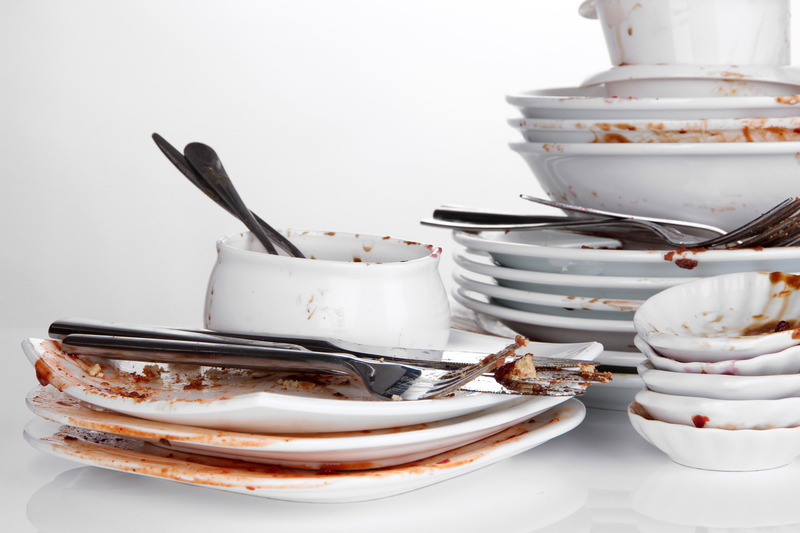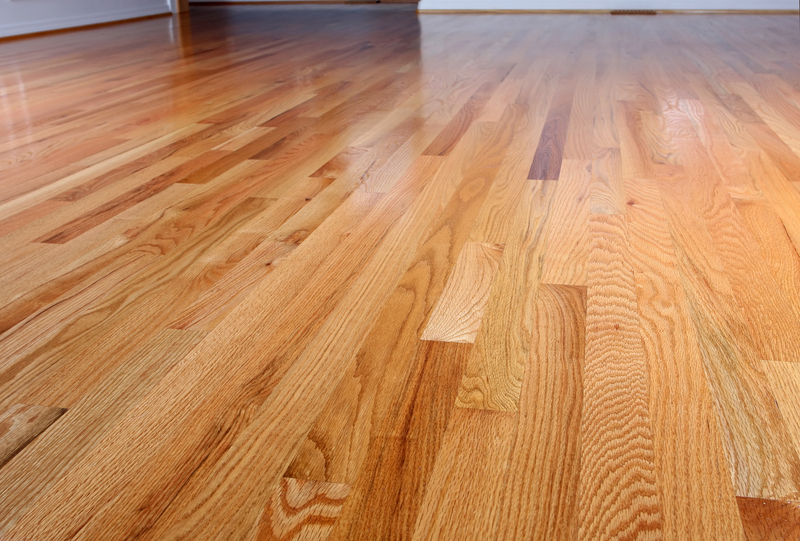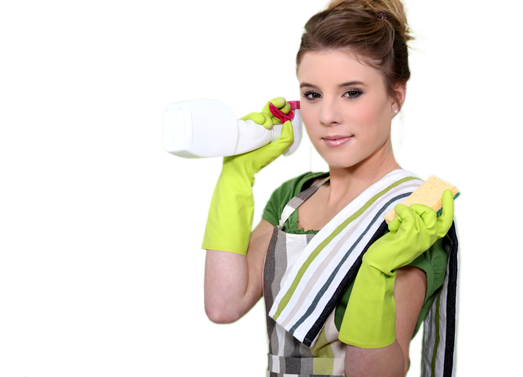Revive Your uPVC Window Frames with This Cleaning Ritual
Posted on 03/09/2025
Revive Your uPVC Window Frames with This Cleaning Ritual
If your uPVC window frames are looking tired, dull, or grimy, don't rush to replace them. With the right cleaning ritual, you can restore the original shine and brightness of your uPVC frames--saving money and improving your home's look instantly. This comprehensive guide will walk you through everything you need to know about caring for uPVC window frames, from why regular cleaning matters to detailed step-by-step maintenance tips.
Why You Should Clean Your uPVC Window Frames Regularly
uPVC (unplasticised polyvinyl chloride) frames are prized for their durability, energy efficiency, and low maintenance. However, even the toughest materials aren't immune to dust, pollution, weather exposure, and the gradual build-up of dirt, algae, and stains. Neglect can lead to:
- Loss of appearance: Dirty frames look unattractive and let down your whole property.
- Discoloured patches and stubborn marks which are harder to remove with time.
- Staining from airborne pollutants, water spots, or mould growth
- Stiff operation--grit and dirt in moving parts can cause window jamming.
Routine cleaning won't just keep your uPVC windows sparkling--it extends their life and maintains their function.

How Often Should You Clean uPVC Windows and Frames?
A simple uPVC window cleaning ritual every 2-3 months is generally enough for most homes. However,
- If you live in a high-traffic area or near the coast, monthly cleaning will help combat environmental pollutants and salt build-up.
- After any renovation or stormy weather, an extra clean can prevent stains and ingrained dirt.
Tip: The key to great-looking uPVC window frames is little and often--regular light cleaning beats occasional deep scrubbing!
Your Step-by-Step uPVC Window Frame Cleaning Ritual
Ready to restore your uPVC frames to their original brilliance? Follow this proven cleaning process:
Step 1: Gather Your Cleaning Supplies
- Soft microfiber cloths or non-scratch sponges
- Bucket of warm water
- Mild detergent or specially formulated uPVC window cleaner (avoid bleach, chemicals, and abrasive powders)
- Soft-bristled brush for grooves and corners
- Vacuum cleaner with brush attachment (optional, for dust and cobwebs)
- Old toothbrush for tricky spots
- Towel or dry microfiber cloth for drying
Never use steel wool, scouring pads, or harsh chemicals as these can scratch and permanently damage uPVC window frames.
Step 2: Remove Loose Dirt and Debris
- Start by vacuuming around and inside the frame to remove accumulated dust, crumbs, dead bugs, and cobwebs.
- Wipe down with a dry microfiber cloth to eliminate surface debris. This prevents scratching during wet cleaning.
This prep step helps avoid pushing dirt into grooves and makes later cleaning easier.
Step 3: Wash the uPVC Surfaces
- Mix a small amount of mild detergent (such as dish soap) or dedicated uPVC window cleaner into your bucket of warm water.
- Soak a soft cloth or non-scratch sponge; wring out excess water to prevent dripping.
- Gently wash the uPVC window frames, moving from top to bottom in straight lines.
- Focus on corners, hinges, and joints where dirt is most likely to accumulate.
Avoid excess moisture near window seals and trims, as this can cause water to seep into the frame.
Step 4: Tackle Stubborn Stains
- For tough marks or ingrained dirt, apply a diluted uPVC cleaner or a mixture of white vinegar and water.
- Let the solution sit for 2-3 minutes, then gently scrub with an old toothbrush or soft brush.
- Never use colored cloths that may transfer dye onto white or light frames.
_Still seeing stains?_ Carefully use an eraser sponge (magic sponge), but always test on a hidden area first!
Step 5: Rinse and Dry
- Rinse your cleaned uPVC window frames with clean, cool water using a fresh cloth.
- Dry thoroughly with a microfiber or lint-free towel to prevent streaks and water spots.
- Open windows to air-dry the inner frame, sills, and reveals.
Leaving moisture trapped can lead to mould or musty odours--don't skip this step!
Special Care: Restoring Faded or Discoloured uPVC Frames
Years of sun, pollution, and weathering can leave uPVC window frames looking yellow, faded, or chalky.
- For mild cases: A deep clean with a dedicated uPVC cream cleaner can restore shine and lift minor surface stains.
- Buff the product onto the frames with a soft cloth and follow up with a clean, dry towel.
- For severe discoloration: There are specialist uPVC restoration products available that chemically brighten and polish the frame. Always follow manufacturer directions.
Avoid "home remedies" using harsh substances like acetone, nail polish remover, or sandpaper--these will irreparably damage your frames.
Extra uPVC Window Maintenance Tips
A spotless frame is just the start. Help your windows last for decades with this uPVC maintenance checklist:
- Lubricate moving parts: Use a silicone-based spray on hinges and locks every 6 months.
- Check drainage holes: Clear out debris or blockages that could cause leaks or dampness.
- Replace worn weather seals to keep draughts and moisture at bay.
- Clean both inside and outside surfaces of frames for all-around protection.
- Keep curtains and blinds open as much as possible to reduce condensation on window frames.
Common Cleaning Mistakes That Ruin uPVC Window Frames
Many homeowners accidentally damage their uPVC frames by:
- Using abrasive scourers or harsh chemicals--they scratch and erode the finish, making staining worse.
- Skipping regular cleaning, allowing deep-set grime to accumulate.
- Ignoring the tracks and grooves, leading to window operation problems and potential leaks.
- Using colored cloths or newspapers that may stain white or light-colored uPVC windows.
- Applying petroleum-based lubricants that break down seals and attract more dust.
Keep your cleaning gentle, frequent, and consistent for the best results!
Busting Myths: What NOT to Use on uPVC Windows
You might have heard all sorts of "tips" about cleaning uPVC window frames--sadly, many of them do more harm than good. Here's what you should never use:
- Bleach or ammonia: These can weaken the uPVC, causing it to yellow, dry out, or crack.
- Steam cleaners: High-pressure steam may force water behind seals, leading to trapped moisture and damp issues.
- Abrasive powders or steel wool: Will scratch and dull the finish permanently.
- Solvents such as acetone, methylated spirits, or white spirit, which can "melt" or pit the uPVC surface.
Stick to mild, non-abrasive cleaners and soft cloths for a safe and effective clean--every time.
DIY uPVC Cleaning Solutions That Work
If you prefer eco-friendly or homemade cleaners, try these safe, effective options for your uPVC window frames:
- Dish soap and warm water: The gentlest and most effective regular cleaner.
- Vinegar and water solution (1:4 ratio): Excellent for cutting grease and removing light water marks or mold.
- Baking soda paste (for stubborn spots): Mix baking soda with a little water; apply gently with a sponge, rinse thoroughly.
Always test DIY cleaners on a hidden part of the window frame first, and avoid anything more acidic or abrasive.
How to Keep Your uPVC Window Frames Cleaner for Longer
Prevention is the best cure! Minimize cleaning time with these pro-active tips:
- Install window cills or drip edges to direct rainwater and debris away from frames.
- Trim garden plants and avoid storing garden tools or chemicals near windows to prevent accidental staining.
- Wipe frames after heavy weather to stop mud and water from drying into stains.
- Use nets or screen panels if you live in a high-pollution or urban area to reduce grime build-up.
Quick monthly dust-downs make your major uPVC window frame cleaning ritual even faster and easier.
Frequently Asked Questions: uPVC Window Frame Cleaning
Can I paint my uPVC window frames to hide stains?
While some products claim to bond with uPVC, painting is rarely recommended and may void your window warranty. It's almost always better to revive with professional cleaning and restoration products designed for uPVC surfaces.
What's the best time of year for cleaning uPVC windows?
Spring and autumn are ideal, as milder weather means fast drying and less risk of streaks. Avoid extremely hot, sunny days--cleaners will evaporate quickly and can leave residue.
How can I stop mould and mildew on window frames?
Regular cleaning, thorough drying, and proper ventilation are key. Use a diluted vinegar solution to wipe away existing mold and always mop up condensation.
Are commercial uPVC cleaners better than DIY solutions?
Not always--mild soapy water is usually sufficient for day-to-day cleaning. However, for extreme staining, yellowing, or burnt-on marks, a specialist uPVC frame cleaner may deliver superior results.

The Final Word: Make uPVC Window Cleaning a Habit!
Reviving your uPVC window frames is simpler than you think--and the benefits go beyond curb appeal. Regular uPVC cleaning keeps your whole home healthier, more valuable, and warmer. With the right products and techniques, you'll keep your investment looking brilliant for decades.
- Avoid abrasive scrubbing and harsh chemicals--your frames will thank you!
- Create a cleaning calendar reminder every 2-3 months--little and often works best.
Ready to revive your uPVC window frames? With this easy cleaning ritual, your windows will shine like new--boosting your home's value and your daily happiness.
Further Resources
- Official uPVC Window Cleaning Tips
- Which? - How to Clean Windows and Frames
- Rated People: How to Clean uPVC Windows
Take pride in your home. Bring your uPVC window frames back to life one simple clean at a time!




